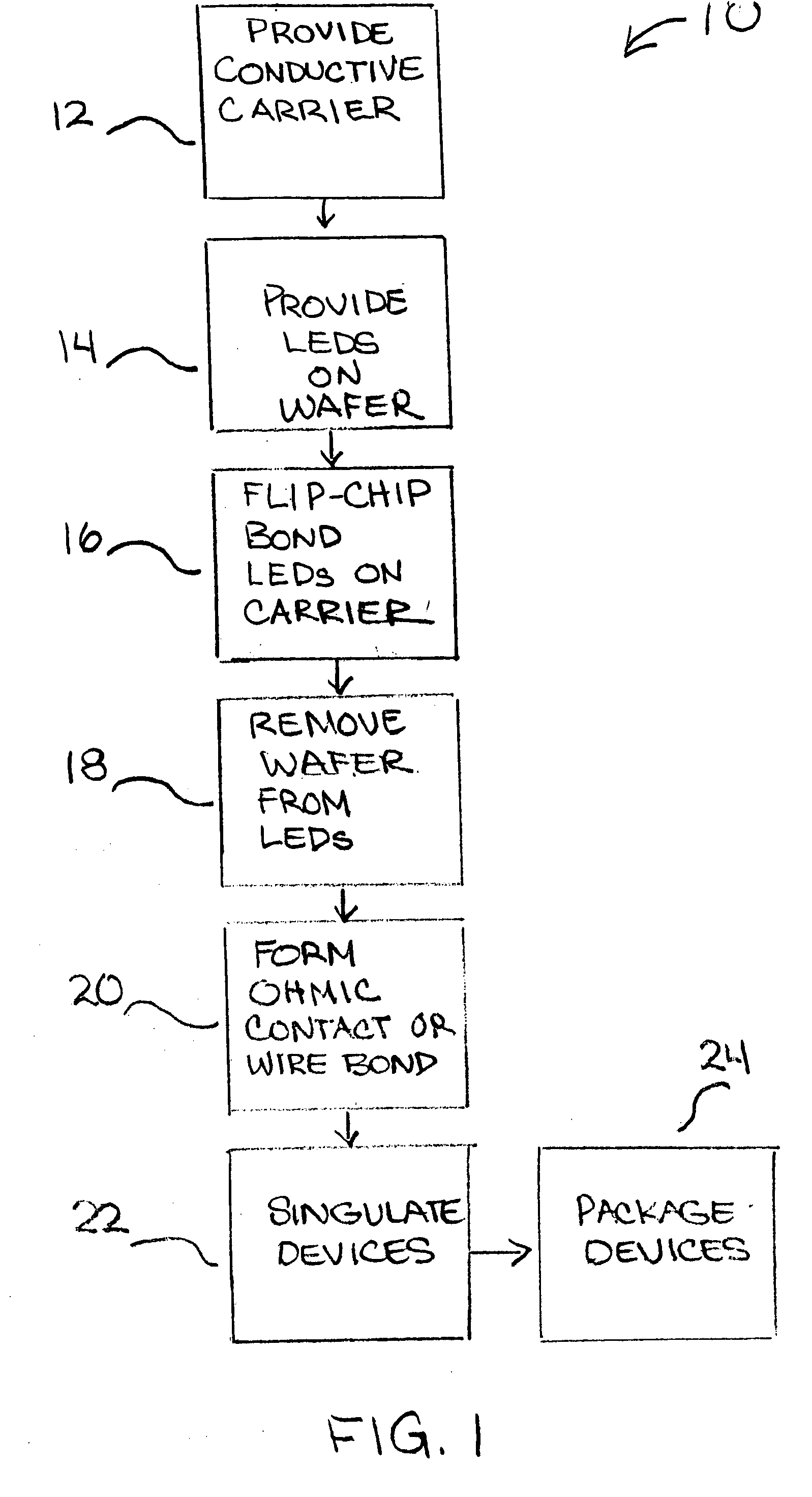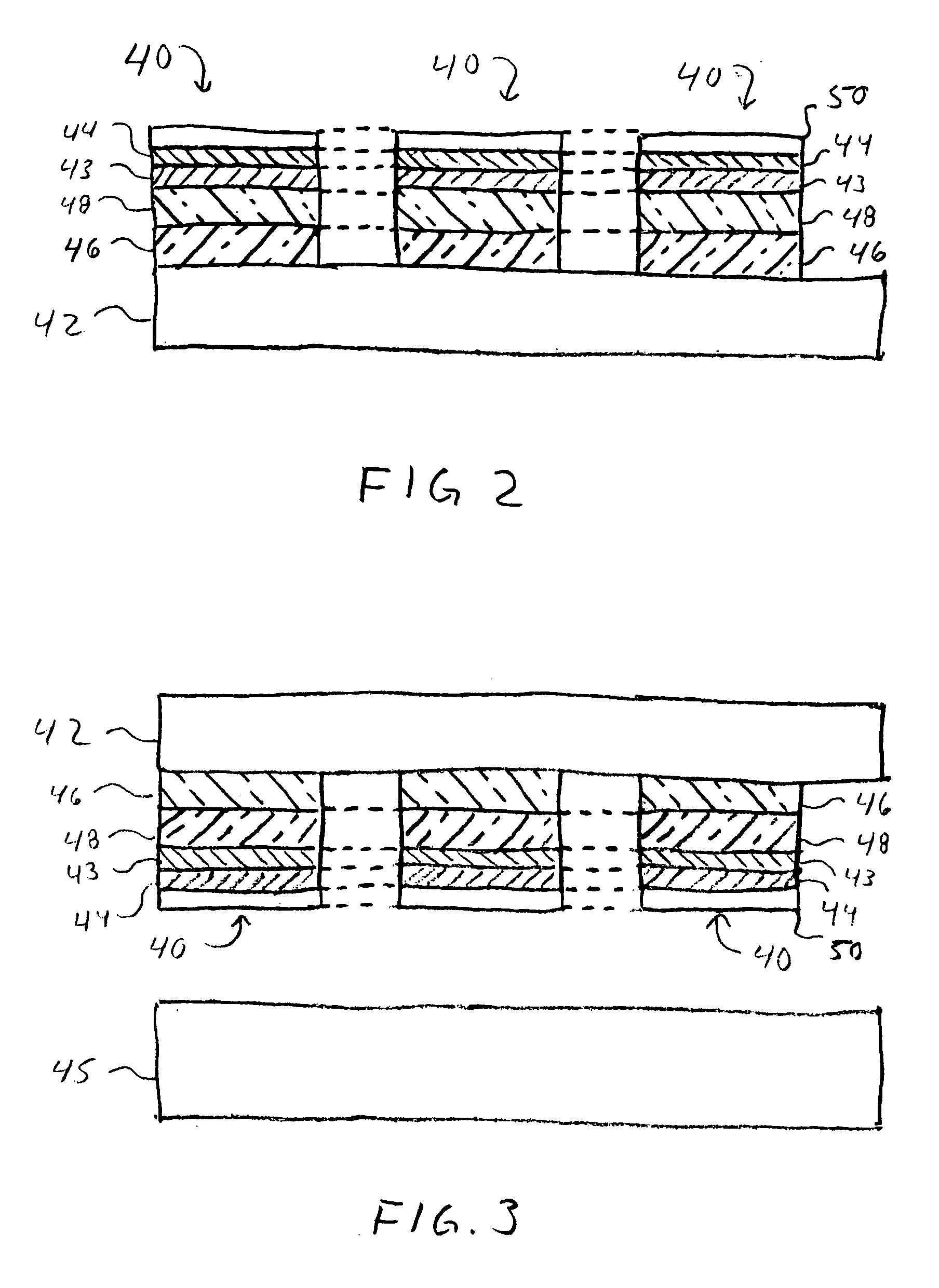Substrate removal process for high light extraction LEDs
a technology of high light extraction and substrate removal, which is applied in the direction of semiconductor devices, basic electric elements, electrical appliances, etc., can solve the problems of reducing the overall emission efficiency of the device, and difficulty in emitted light from the led to the surroundings
- Summary
- Abstract
- Description
- Claims
- Application Information
AI Technical Summary
Benefits of technology
Problems solved by technology
Method used
Image
Examples
Embodiment Construction
[0025]FIG. 1 shows one embodiment of a method 10 according to the present invention for fabricating light emitting semiconductor devices, with the method 10 particularly adapted to fabricating singulated vertical geometry light emitting diodes (LEDs) on a submount / carrier (“carrier”) with the substrate on each LED removed. In one embodiment of the method 10, LEDs are made from the Group-III nitride material system, such as AlGaN / GaN, and are fabricated on a conductive carrier. In step 12, a conductive carrier is provided that is sized such that a plurality of LEDs can be mounted on one of its lateral surfaces. Desirable characteristics of the carrier are low cost, low resistivity, good thermal conductivity, and good coefficient of thermal expansion relative to the bonded devices.
[0026] Many different types of carriers can be used having different structures. In one embodiment, the carrier can comprise a semiconductor material, such as SiC or Si, and to provide low resistivity chara...
PUM
 Login to View More
Login to View More Abstract
Description
Claims
Application Information
 Login to View More
Login to View More - R&D
- Intellectual Property
- Life Sciences
- Materials
- Tech Scout
- Unparalleled Data Quality
- Higher Quality Content
- 60% Fewer Hallucinations
Browse by: Latest US Patents, China's latest patents, Technical Efficacy Thesaurus, Application Domain, Technology Topic, Popular Technical Reports.
© 2025 PatSnap. All rights reserved.Legal|Privacy policy|Modern Slavery Act Transparency Statement|Sitemap|About US| Contact US: help@patsnap.com



